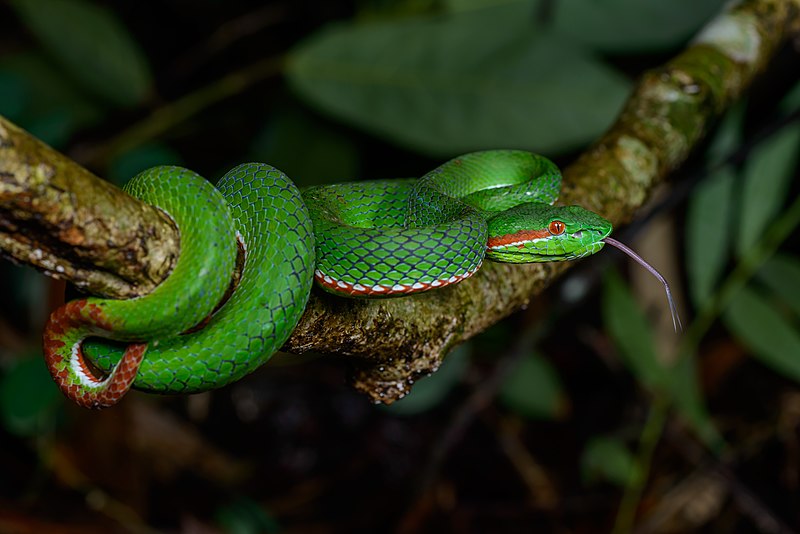Search This Blog
Pit Vipers The Optimal Blend of Style & Performance. Pit Vipers Outdoor Fashion and Lifestyle.
Featured
- Get link
- X
- Other Apps
Stejneger's Pit Viper
The Stejneger's pit viper is a venomous snake native to Asia. It is bright to dark green above and pale green to whitish below. There is a bright ventrolateral stripe, which occupies the whole of the outermost scale row and a portion of the second row. This stripe is bicolored orange or brown (below) and white (above) in males or bicolored or white only in females.

DESCRIPTION
Bright green with yellow belly. Distinctive white stripe above the lip running laterally down the length of the body. Both male and female have characteristically triangular shaped head with red eyes containing vertical pupils. Can have orange/brown coloration on the tail.
BEHAVIOR
Active at night and occasionally roosting in bushes during the day. The Stejnegeri’s Viper is an ambush predator that will wait in a single position ready to strike. They are a viper and have relatively long retractable fangs and will bite readily at anything that comes within range. Generally not prone to give chase but will hold their ground if they feel cornered. Not actively aggressive but will not hesitate to bite. A bite from a Stejnegeri’s Viper should be considered very serious and medical attention should be sought immediately. Although not known to be deadly serious damage can occur from a bite even if treated and complications can always arise.
HABITAT
Found all over Taiwan, generally in forested areas along open spaces like trails or water culverts where geckos and other prey can be ambushed. Previously not known to position near populated locations with artificial light, this species has been observed by the authors more and more frequently near street lamps and other man made locations.
DIET
Stejneger's it vipers are carnivores. They eat small rodents, birds, frogs, and lizards.
SUMMARY
- VENOM: Highly dangerous
- PREVALENCE: Very common
- ACTIVE PERIOD: Active at night
- KEY ID FEATURES: Bright green body and green belly, triangular head, normally positioned to strike
- BEHAVIOR: Ambush predator usually stays still and ready to strike, will bite readily with fast strikes
- SIZE: Small/Medium - 40-60cm (males), 60-90cm (females)
- IUCN: LC - Least Concerned
- OTHER: Can be mistaken with Greater Green Snake
Popular Posts
What is Eastern Diamondback Rattlesnake?
- Get link
- X
- Other Apps
Himalayan Pit Viper-Gloydius Himalayanus
- Get link
- X
- Other Apps
Comments
Post a Comment